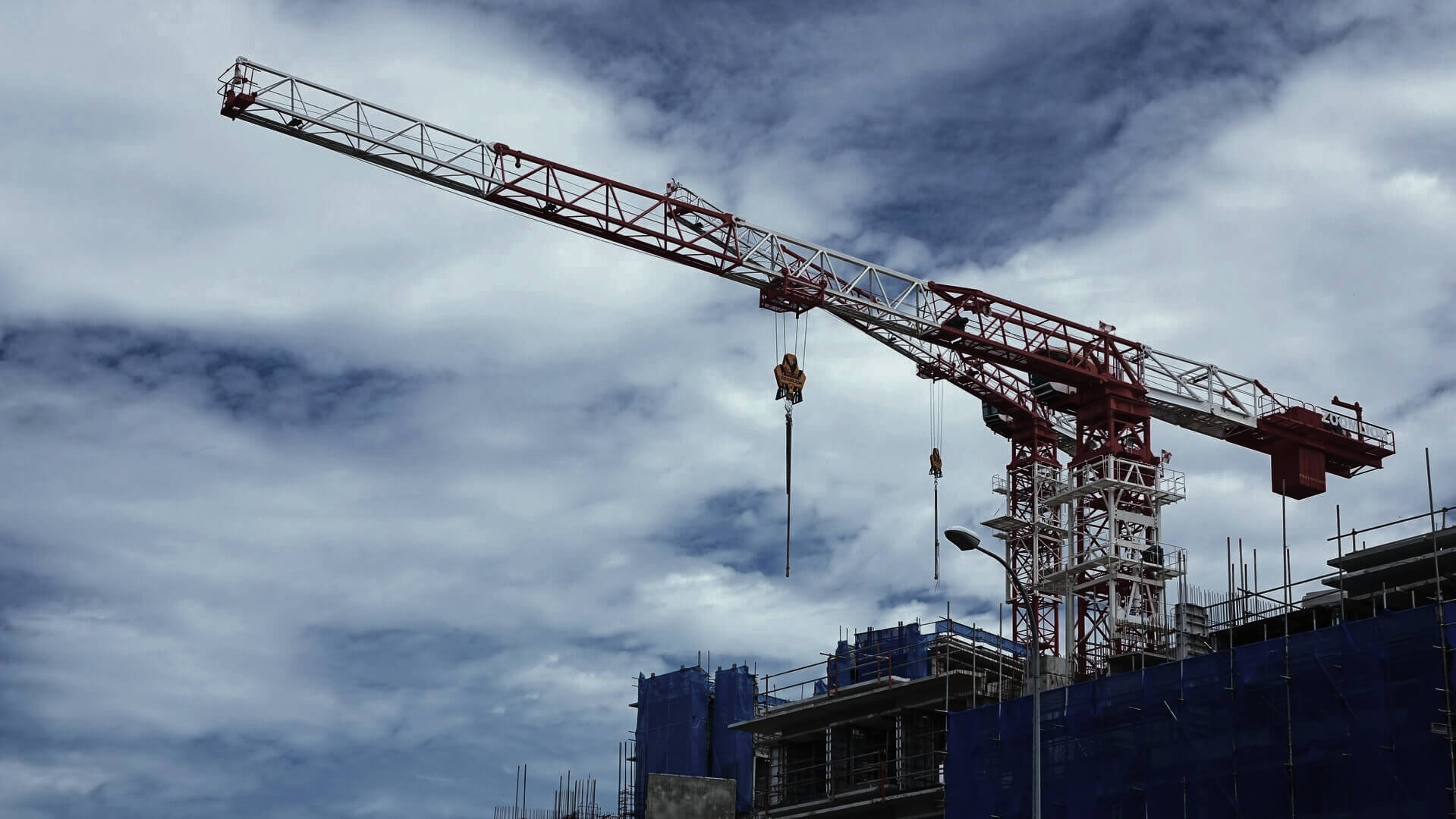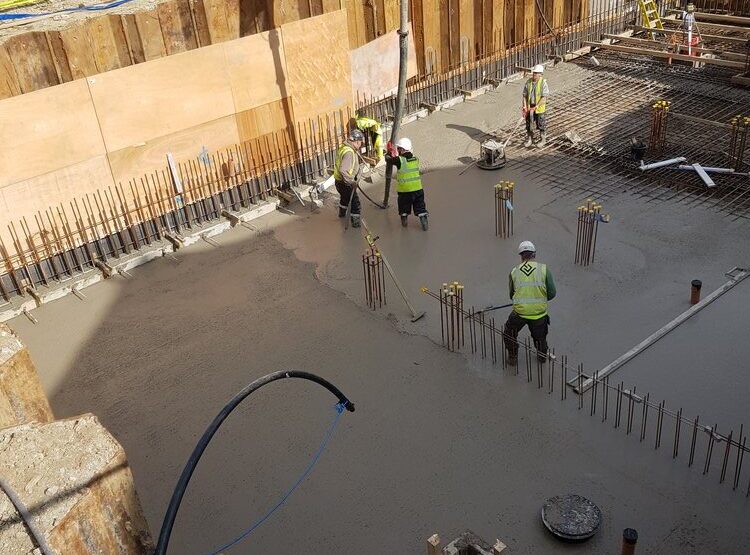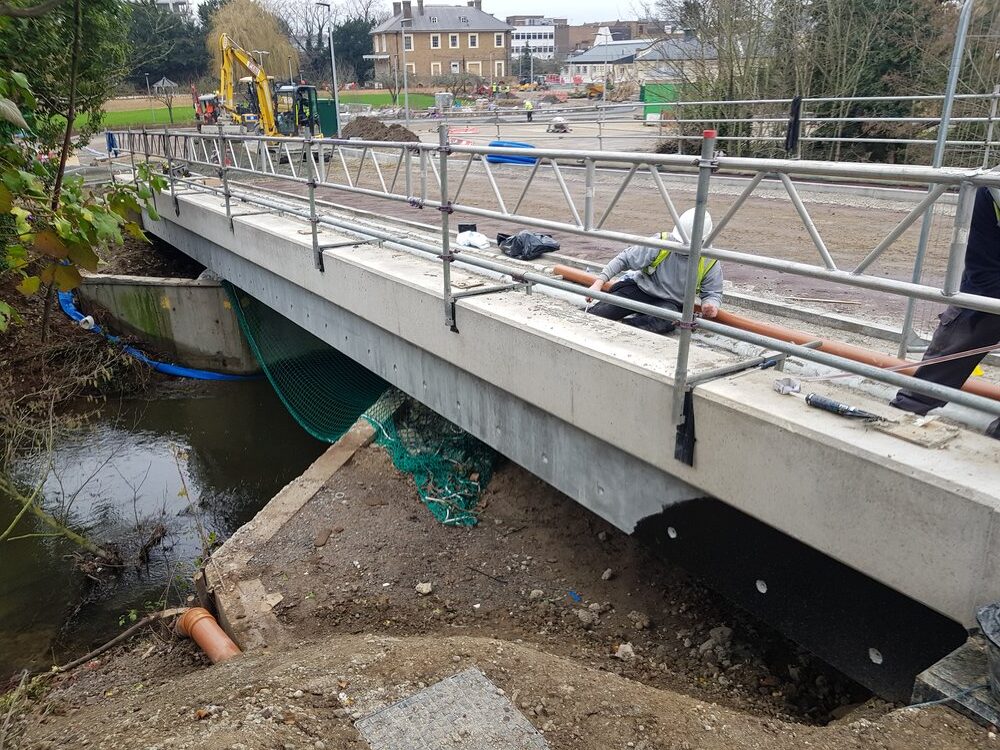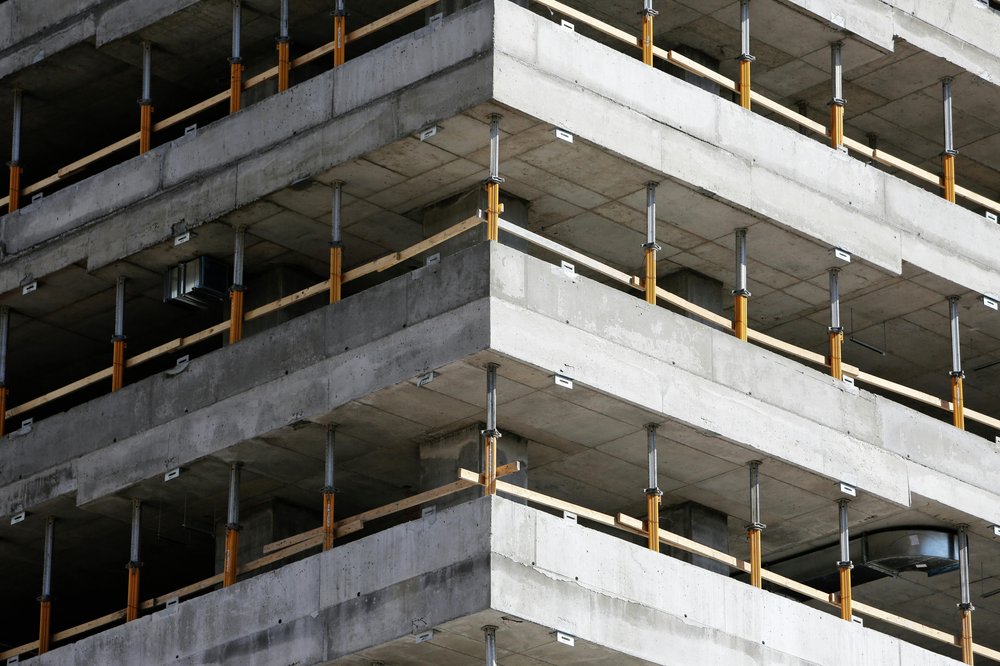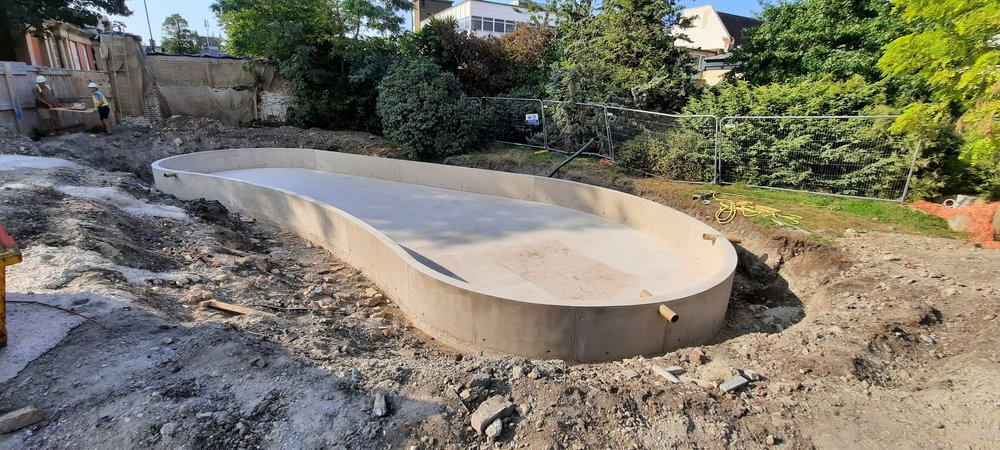Laying concrete, also known as concrete pouring, involves the process of placing, leveling, and finishing freshly mixed concrete to create durable and structurally sound surfaces or elements. This process is critical to ensure the concrete meets design specifications and achieves optimal strength and longevity.
Key steps in laying concrete include:
- Preparation:
- Prepare the site by ensuring the formwork is correctly installed and any reinforcement, such as rebar, is securely in place.
- Clean the area to remove debris, water, or contaminants that could weaken the bond.
- Mixing:
- Use a ready-mix supplier or prepare the concrete mix onsite, ensuring the correct ratio of cement, sand, aggregate, and water for the intended use.
- Pouring:
- Place the concrete into the prepared area, starting at the corners and working steadily to fill the entire space. Ensure even distribution to avoid voids or segregation.
- Compacting:
- Use tools like vibrators to eliminate air pockets, ensuring the concrete is dense and bonds well with reinforcement.
- Leveling and Screeding:
- Use a screed (a flat tool) to level the surface, ensuring it meets the required thickness and design elevation.
- Finishing:
- Smooth the surface using tools such as trowels or floats. Additional finishes, like brooming for slip resistance or decorative patterns, may also be applied.
- Curing:
- Protect the concrete from drying too quickly by covering it or applying water to maintain moisture. Proper curing ensures the concrete achieves its intended strength and durability.
The laying process requires precision and proper timing to prevent defects like cracking, unevenness, or poor bonding.













